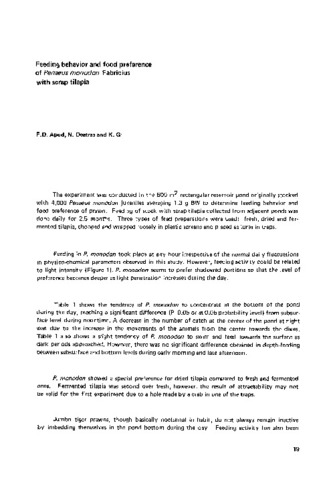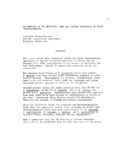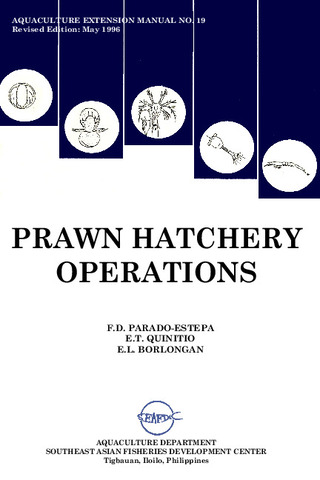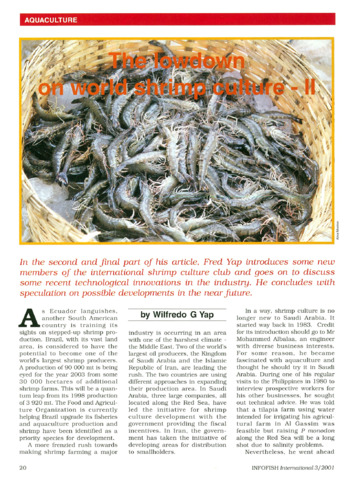Feeding behavior and food preference of Penaeus monodon Fabricius with scrap tilapia
- Global styles
- MLA
- Vancouver
- Elsevier - Harvard
- APA
- Help

Date
1980Page views
2,007ASFA keyword
AGROVOC keyword
Taxonomic term
Metadata
Show full item record
Share
Abstract
The time of day during which P. monodon feeds at different depth levels in earthen ponds, and its preference for three types of tilapia feeds (dry, fresh and fermented) were determined. It was observed that P. monodon concentrated at the bottom beds during the day and along the periphery of dikes during night-time, with a slight tendency to swim and feed towards the surface as darkness increased. P. monodon showed special preference for dried tilapia compared to fresh and fermented tilapia. P. monodon also showed adaptability to the platform method of feeding, especially during night-time.
Suggested Citation
Apud, F. D., Deatras, N., & Gonzales, K. (1980). Feeding behavior and food preference of Penaeus monodon Fabricius with scrap tilapia. SEAFDEC Aquaculture Department Quarterly Research Report , 4(3), 19-21. http://hdl.handle.net/10862/2375
Type
ArticleCollections
Related items
Showing items related by title, author, creator and subject.
-
An overview of the nutrition, feed and feeding techniques of prawn penaeid/shrimps
Piedad-Pascual, Felicitas (Philippine Council for Aquatic and Marine Research and Development, 1989)This paper echoes what transpired during the first International Conference of Penaeid Prawns/Shrimps held in Iloilo City in December 4-7, 1984, particularly on the Nutrition nd Feed Development. Around 25 papers were ... -
Series: Aquaculture extension manual; No. 19
Prawn hatchery operations
Parado-Estepa, Fe D.; Quinitio, Emilia T. ; Borlongan, Emeterio L. (Aquaculture Department, Southeast Asian Fisheries Development Center, 1996-05)
The manual, an updated version of the 1984 SEAFDEC/AQD manual, presents the underlying principles and step-by-step instructions of prawn larval and post-larval rearing. The techniques described are not only applicable to ...
; Borlongan, Emeterio L. (Aquaculture Department, Southeast Asian Fisheries Development Center, 1996-05)
The manual, an updated version of the 1984 SEAFDEC/AQD manual, presents the underlying principles and step-by-step instructions of prawn larval and post-larval rearing. The techniques described are not only applicable to ... -
The lowdown on world shrimp culture - II
Yap, Wilfredo G. (INFOFISH, 2001)This paper introduces some new members of the international shrimp culture club and goes on to discuss some recent technological innovations in the industry, particularly the polyculture of tilapia (mainly Oreochromis ...






